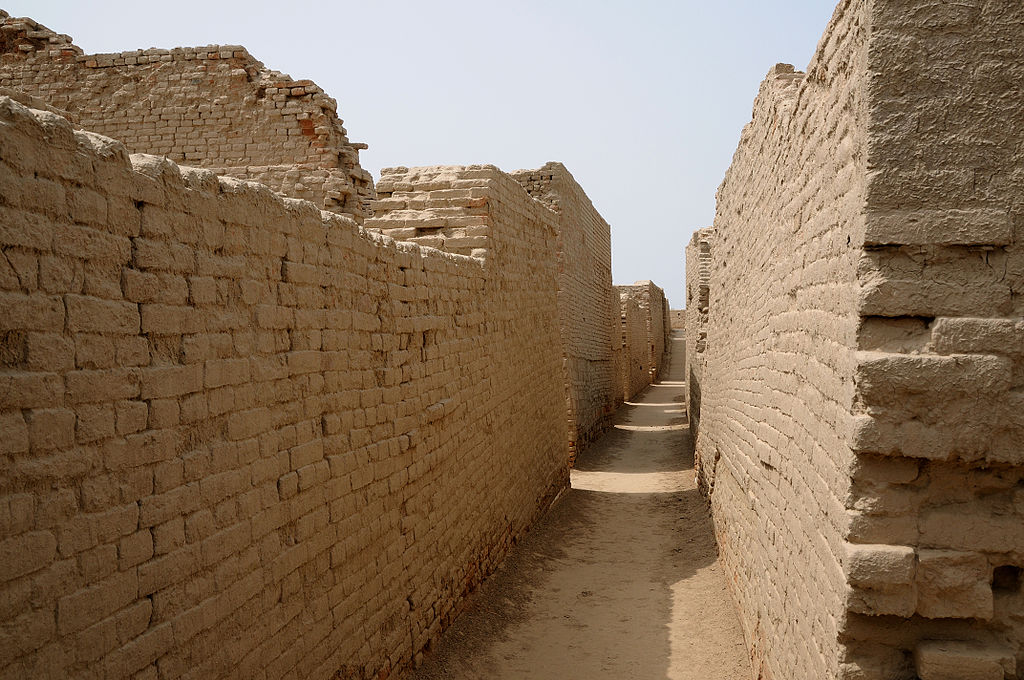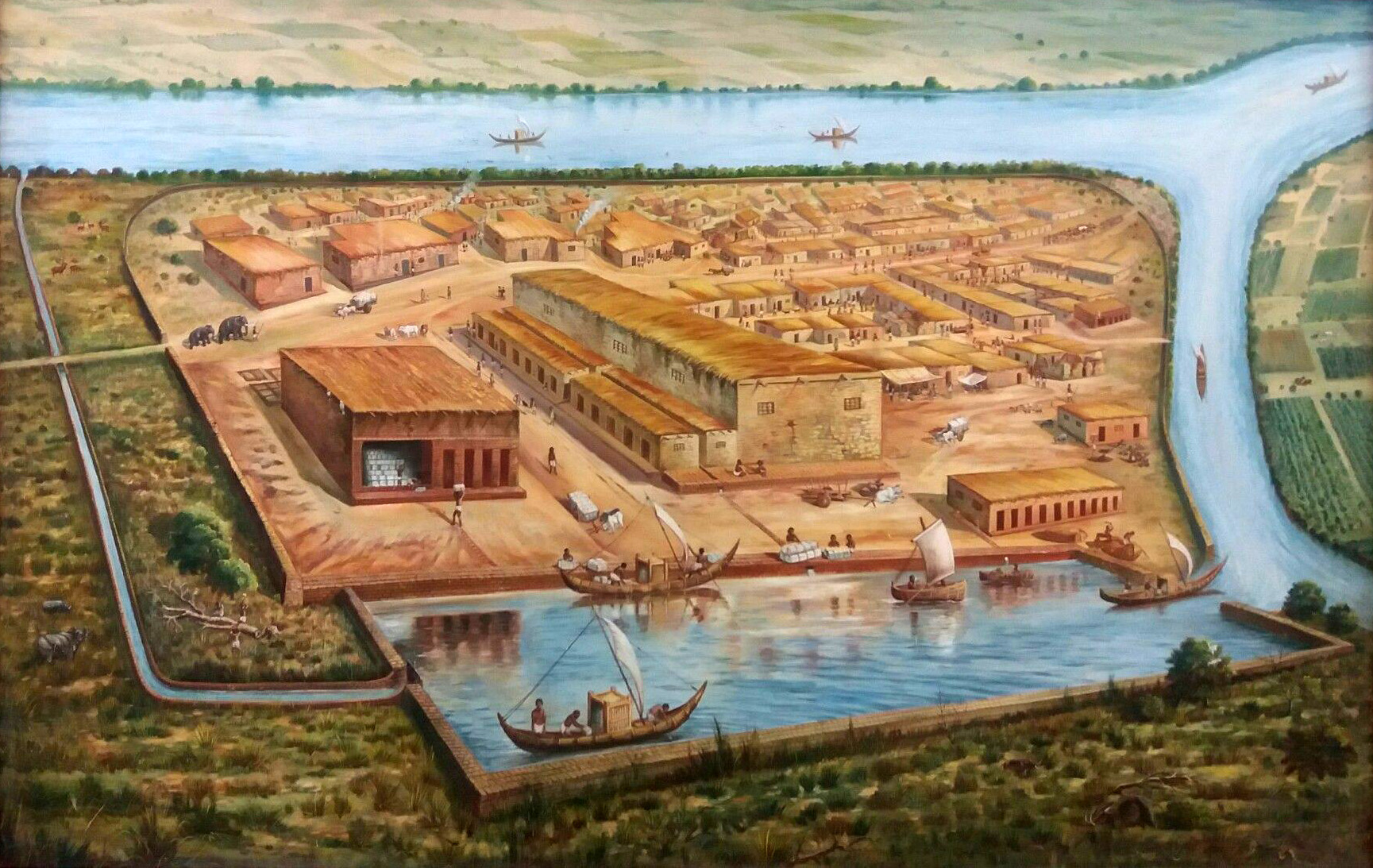The flourishing cities of the Indus Civilisation followed various plans, but in addition to the differences, there are also many similarities between them.
The cities were divided into two parts: the lower city and the upper city. The wall surrounding the cities often surrounded the districts separately. The walled cities stood out spectacularly from their surroundings, thereby drawing attention to themselves. The sight of the walled city radiated dominance.

As centers of economic life, cities played an important role in trade. The market square in the walled city could only be accessed through the city gate, which was built so narrow that only one bullock cart could pass through it at a time. The gate made it possible to control and tax caravans.

Evidently, the city wall could have served for protection, although the opinions of archaeologists are divided in this regard: no traces of a siege were found on the walls surrounding the cities of the Indus Valley. In the case of Mohenjo-daro, the function of the wall surrounding the city districts is more likely to have served to protect against flooding. Due to the proximity of the Indus, the city was built on a platform made of river sediment in its first construction phase. The function of the massive walls surrounding the city may have been to hold this earthwork. Despite the walls protecting the city, around 1900 BCE, its inhabitants were forced to leave Mohenjo-daro.
Source of images:
1: https://commons.wikimedia.org/wiki/File:Moenjodaro(c)_by_Usman_Ghani.jpg
2: https://commons.wikimedia.org/wiki/File:Harappa.jpg

